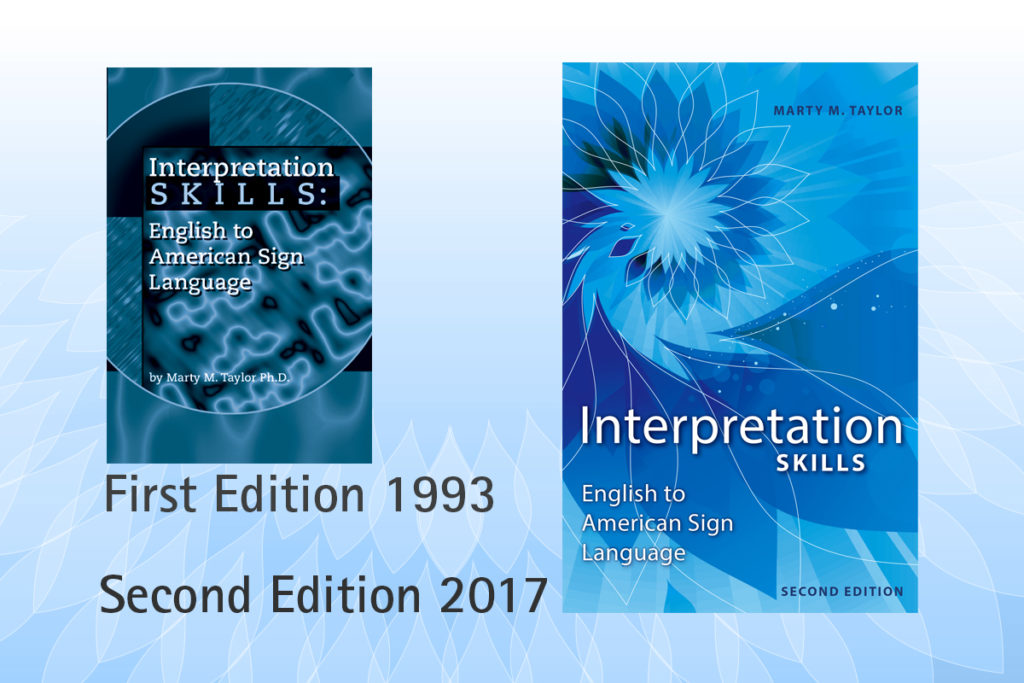Marty M. Taylor, PhD
Here at Interpreting Consolidated (IC), we call the book that started it all “The Blue Book”. You could say that might be “judging a book by its cover” – it IS blue – but really it is so foundational to our company that we call it simply that. More than 25 years have passed since the publication of the first edition of Interpretation Skills: English to American Sign Language.

That first edition, and Interpreting Consolidated as a publishing company, came about because I wanted to conduct research for my doctorate and answer the question “what skills do expert interpreters possess?” and share the results with the field.
Fluency is of paramount importance in providing effective, efficient, and accurate interpretations. In 2017, when the time came to write a second edition, I found that those early research findings were still true; linguistic fluency in English and American Sign Language (ASL) continues to challenge many interpreters.
The Second Edition retains the eight original Major Features described in the first edition with some slight changes to the names.
- Fingerspelling
- Numbers
- Lexicon
- Classifiers
- Grammar
- Space
- Interpreting
- Composure, Appearance, and Health
Like the first edition, the second edition presents Major Features with the relevant Key Skills, Descriptions of the Skills, and Possible Errors with examples. The second edition identifies a greater number of skills, more thoroughly defines each skill, and increases the number and detail of Possible Errors with accompanying examples. It now includes 85 Key Skills with 421 Possible Errors, where previously there were 59 Key Skills with 183 Possible Errors.
The Classifiers Major Feature was reconstructed and has become a Knowledge-rich Skill. The first edition discussed only classifiers and size and shape specifiers (SASSes). Since 1993, significant research of ASL classifiers has identified many more categories of classifiers. Nine significant categories addressed in the second edition are listed here in alphabetical order:
- body classifiers
- body part classifiers
- descriptive classifiers (previously known as SASSes)
- element classifiers
- instrument classifiers
- locative classifiers
- plural classifiers
- semantic classifiers
- tool classifiers
The second edition also expands the discussion of Knowledge-lean Skills and Knowledge-rich Skills, and how this categorization of skills affects the analysis of interpreting work (more about Knowledge-rich and -lean Skills here in ASL and here in English). A clear understanding of this distinction is important so that students and practitioners can identify which of the 85 skills are knowledge-lean and which are knowledge-rich. They can then focus their practice on knowledge-rich skills, which require more time and deliberate attention to develop.

Interpretation Skills: English to ASL was only the beginning for IC. The first and second editions combined have sold over 30,000 copies. The book and its sister text, Interpretation Skills: ASL to English, are used by a great many interpreting programs at colleges and universities across North America. Several other books and DVDs are now in our catalogue, with more to come.

